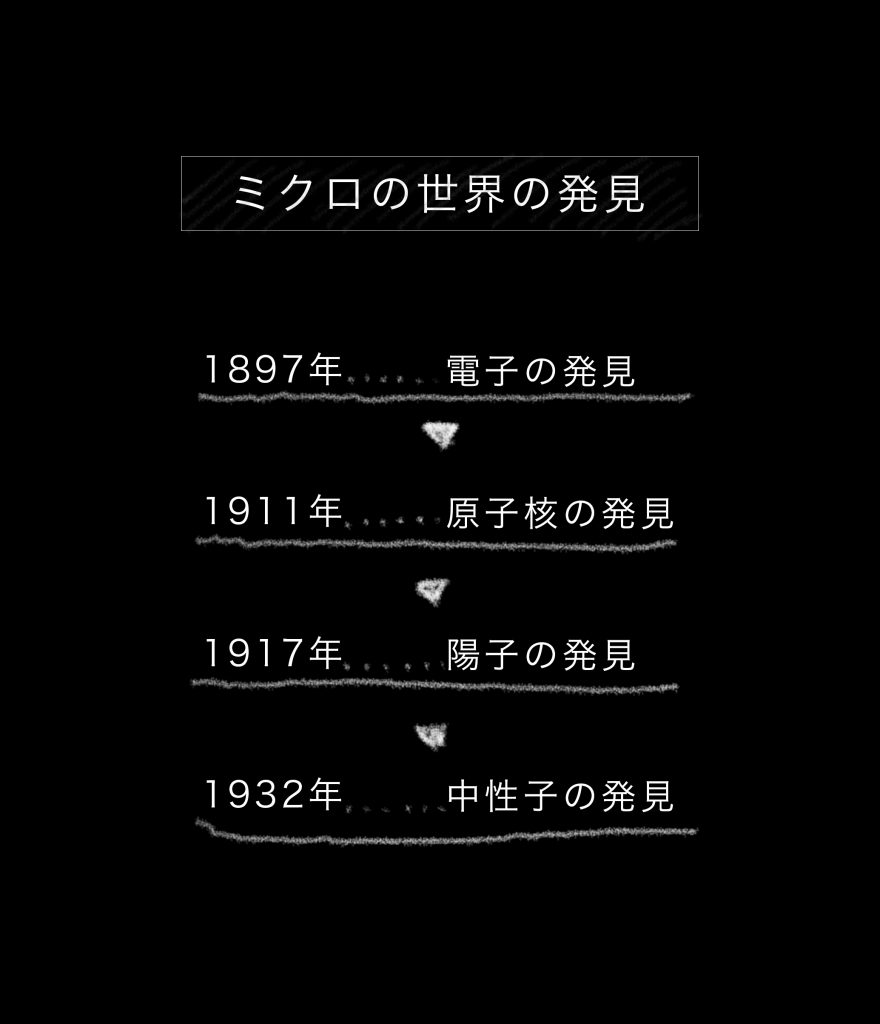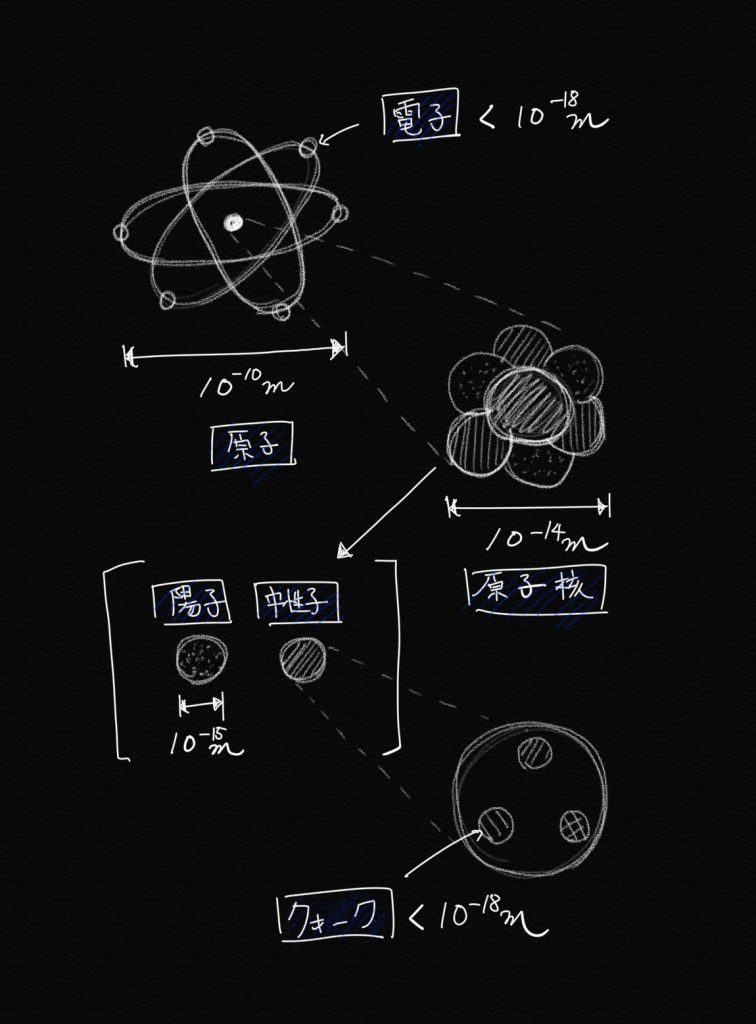Physics in the Yukawa era and the meson theory (2) Elements, atoms and nuclei
Elements, atoms and nuclei: The players in the micro-world
|
During the period spanning from about 10 years before 1907 (Yukawa’s birthyear) to about 10 years after, new discoveries in the micro-world were made one after another, leading to the miraculous advancement of the physics dealing with the atomic nuclei and elementary particles. In 1897, about 10 years before the birth of Hideki Yukawa, J.J. Thomson discovered the electron. That was the first elementary particle discovered in the history. Thus, scientists began believing in the existence of “atoms” as elements in the form of “particles.” In 1905, the theory of Brownian motion announced by Einstein confirmed the existence of the atoms. If there are atoms, what is the internal structure of an atom like? Physicists’ interest quickly shifted to the internal structure of the atom at about that time. For example, Hantaro Nagaoka, the first president of Osaka Imperial University (presently The University of Osaka), was a forward-thinking physicist who advocated the Saturnian model of the atom. It was during this period that other atomic models, such as Thomson’s plum pudding model of the atom, were proposed. What settled the arguments on the structure of the atom was the experiment conducted in 1911 by Rutherford et. al. In the experiment, Rutherford et. al. forced atoms to collide with each other and discovered that there was something much smaller at the center of the atom. That small “thing” was named the nucleus. The size of an atom is about 10-10 m, and the size of a nucleus is about 10-14 m. If the atom were the size of the Tokyo Dome stadium, the nucleus would be about the size of a ping-pong ball. In the era when even the atom was frighteningly small according to the common sense beliefs at that time, particles that were an order of magnitude smaller than the atom were found before the excitement of the discovery of the atom subsided. The search in the micro-world continued to advance rapidly. Soon after the discovery of the nucleus, it became clear that the nucleus was a composite particle made up of even smaller elements called the protons and neutrons. The protons were discovered in 1917, six years after Rutherford’s experiment. Later, the neutrons were discovered in 1932. All the players in nuclear physics had appeared on the stage. In 1932, Yukawa was studying in the graduate school. Yukawa wrote about his years as Osaka Imperial University as follows: |
|
(Written by Masakiyo Kitazawa)






